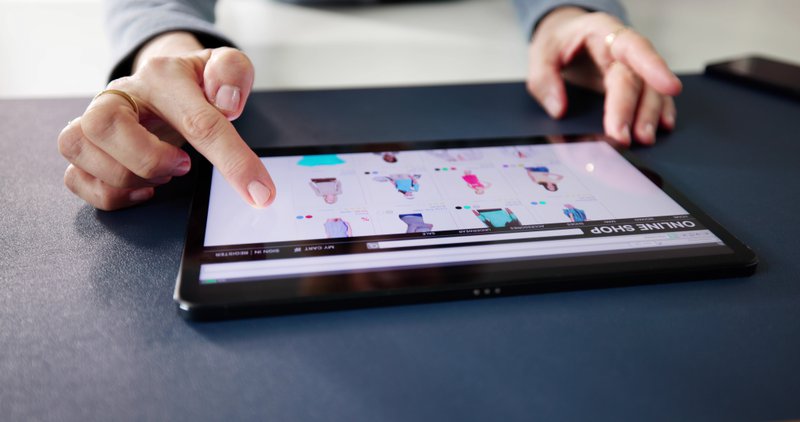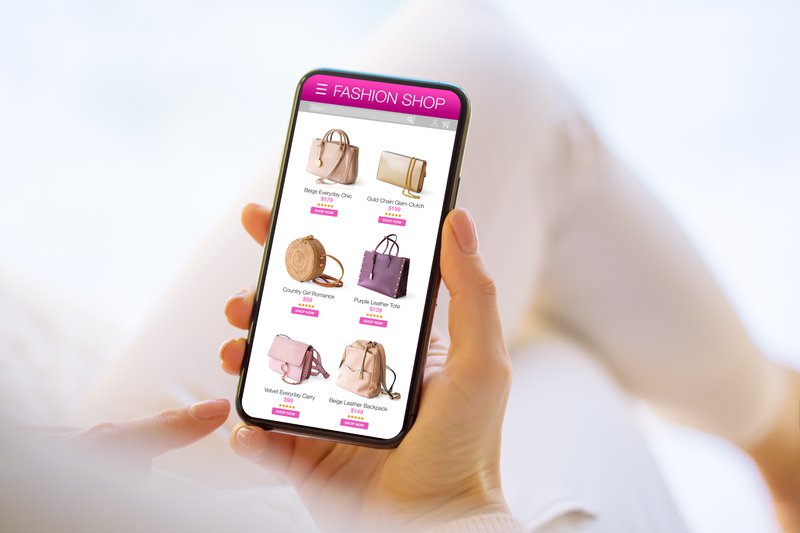Online sales continue their upward trajectory. Payoneer reported that from a $5.2 trillion global total in 2021, online retail will hit $8.1 trillion by 2026. As more people discover the allure and convenience of online shopping, brand marketers will need to take their game to the next level. Specifically, this means ensuring that online visual merchandising strategies appeal to changing consumer preferences.
Visual merchandising, in particular, plays a pivotal role in converting online store visitors into buyers. Humans are highly visual creatures, so having a visually-pleasing strategy increases the attractiveness of both your storefront and your products.
Even as most online sellers have caught on and modernized their storefronts, consumer preferences continue to evolve. Brands hoping to stay ahead of the curve must anticipate these changing tastes and adjust accordingly.
Here, we’ll look at some key trends and strategies shaping the retail landscape. We’ll also supply practical tips on how to create experiences that are personalized and engaging–helping you to drive both sales and brand loyalty.
The Impact of Changing Consumer Preferences on Visual Merchandising
Today’s buyer knows what they want. According to LinkedIn, the modern consumer exhibits three distinct characteristics–instrumented, interconnected, and intelligent.

Instrumented: Online shoppers aren’t restricted to their desktops. On the contrary, most are happily using their smartphones to browse for the latest products on their favorite social media platforms. Clicking on the screen during or after playback will automatically transport them to a waiting online store. Consumers also use their devices to look up information, compare prices, and read reviews.
Interconnected: Instead of simply relying on what the sales representative or the brochure says, modern buyers prefer getting feedback from peers. They actively seek out reviews and testimonials to get a better idea about what a product offers. In addition, they keep in touch with fellow social media users to learn more about brands and specific products.
Intelligent: The current availability of information on the net has made it easier for consumers to access independent reviews and make educated comparisons. As a result, they don’t just know what they want–they’ll also set a price point they’re comfortable with and determine the right time to buy.
The Challenge for Visual Merchandising
How can sellers provide today’s astute and knowledgeable consumer with what they want? For a start, they need to give buyers sufficient information to form a positive impression. This goes beyond creating colorful online brochures or hiring a personable influencer or endorser. It’s more about ensuring your brand information is easily discoverable by users amid the flood of competitive noise. This is where the right visual merchandising approach comes into play.
Simply uploading a nice photo along with a description won’t hack it anymore. In the absence of a brick-and-mortar store where people can see and touch items, visual merchandisers need to replicate the experience as closely as they can. Instead of a single picture, show multiple angles and real-world scenarios.
At the same time, provide relevant information, such as real-time data on product variants (size, color, etc.), stock availability, and price.

How the Rise of eCommerce Is Changing the Retail Landscape
Statista forecasts that eCommerce will make up nearly 25% of all retail sales by 2026. As traditional transaction methods give way to disruptors such as digital storefronts and online payments, even more people will start embracing online shopping.
Today, online brands face the challenge of replicating the in-store experience. Besides being able to physically touch and try out products, consumers want personalization. This means findingto touch and try out products physically the products they want without wading through a seemingly endless catalog.
Customers also appreciate receiving customized recommendations, such as those showing results based on previous purchase history. Additionally, online storefronts need a seamless way to transition from social channels to an online store–and back again.
The convenience of online shopping is already converting many buyers to a digital lifestyle. Remember those annual Black Friday frenzies, with shoppers jostling each other to get their hands on heavily-discounted items? Black Friday is currently giving way to its online sibling–Cyber Monday.
Business Insider reports that sales generated by Cyber Monday in 2022 blew past the figures generated by Black Friday, making it the biggest shopping event of the season. And why not? Who wants to brave the cold and line up for hours outside a store when they can buy those sale products from any location via a smartphone?
That said, even with the continued rise of eCommerce, shoppers won’t necessarily abandon the instantaneous fulfillment provided by brick-and-mortar stores. So, until digital shopping becomes an entirely seamless and automated experience, eCommerce will remain a convenient alternative.
The Role of Technology in Modern Visual Merchandising
Meanwhile, eCommerce is also breaching technological boundaries. As such, online shopping is much more intuitive than it was in its early days. More importantly, technology can provide eCommerce customers with a better user experience. Brands are experimenting with the latest online visual merchandising tools to optimize customer engagement.

One example involves embedding interactive videos in visual merchandising, allowing customers to inspect product images in closer detail by zooming in on high-res images.
QR codes and endless aisles are other technological add-ons that maximize the convenience of online shopping. By simply scanning a QR code, sellers are able to transport buyers to their online store. At the same time, consumers can secure an item online even if it’s out of stock at their present location.
Personalization: The Future of Engaging the Next Generation of Consumers
What’s with eCommerce’s obsession with personalization? In real-world shops, managers often treat regular customers preferentially. It turns out that buyers expect a similar experience when they go shopping online. After all, who doesn’t want a little appreciation and recognition when they’re regularly handing over their hard-earned money? With thoughtful design and interactivity, modern visual merchandising can help provide this level of engagement.
Thanks to technological advances, eCommerce is becoming more personalized by the day. In fact, developments in artificial intelligence (AI) and machine learning (ML) are giving sellers better and more detailed insights into their customers. Using AI and ML to sift through customer data provides retailers with a deeper understanding of each customer’s purchase behavior in order to make refined recommendations.
As a result, returning customers might find a warm “Hello!” or “Welcome back!” upon login. The store will then ask if they’d like to pick up where they left off during their last session–or start over with an empty cart.
Upon checkout, brands often provide a list of recommended products based on previously purchased items. Additionally, when a customer’s activity levels fall, the app can be automatically triggered to offer incentives such as digital coupons, discounts, or free shipping on the next purchase.
Creating Immersive and Interactive Experiences to Drive Sales
eCommerce technology continues to push boundaries, driving further visual merchandising developments. Ultimately, these changes help to improve the customer experience and strengthen brand loyalty. Exciting developments in areas such as virtual reality (VR) and augmented reality (AR) are also helping to create a better, more interactive storefront.
For eCommerce stores, VR and AR allow customers to preview products inside a specially created environment–including virtual fitting rooms. So far, we’ve seen virtual cosmetic stores, where customers use their selfie cameras to apply virtual makeup.
We’ve also seen AR-powered dressing rooms, which let customers try out virtual eyewear, shoes, and clothing. if users like the fit, it’s easy to add items to their cart for checkout later.

IKEA launched its virtual furniture app back in 2017. Using a smartphone’s camera features, this app enables customers to preview what IKEA furniture would look like when placed in their homes. Meanwhile, footwear and apparel giant Nike has released an app that uses VR and AR to accurately measure a customer’s foot size. Using the data, Nike then shares specific lines of footwear that have the customer’s size in stock.
Building Sustainable and Socially Responsible Visual Merchandising Strategies
The increase in demand for sustainable and socially responsible brands is dispelling the myth of the mindless consumer. Consumers want retailers to be socially responsible and ethical. Hence, they give good marks to those that only use recyclable or sustainable packaging materials. Alternatively, they might only patronize stores that source their raw materials from ethical suppliers that support sustainable farming, pay fair wages, or avoid animal testing.
Integrating these beliefs into visual merchandising strategies serves to attract more socially conscious buyers. By prominently displaying sustainability and environmental certifications on product pages, online retailers can help to ease potential concerns about their merchandise. Adding a social responsibility page on the company website also helps to provide the credibility that modern buyers seek.
Upgrade Your Visual Merchandising Strategy with Zobrist Smart Merchandiser
The online shopping landscape is changing. For sellers, it’s no longer a matter of having an online storefront that processes orders and accepts online payments. Today’s customers expect an accommodating storefront, a technology-driven process, and responsive visual merchandising.
Zobrist’s Smart Merchandiser offers enterprise-level eCommerce storefronts, mobile commerce applications, and managed services for clients ready to take the next step in online sales. Smart Merchandiser transforms the complicated task of visual merchandising into an easier and more manageable activity. Using drag-and-drop simplicity, inventory management, and social analytics, Smart Merchandiser can boost productivity by as much as 70% while increasing revenue by up to 20%.
Learn more about how Smart Merchandiser and other Zobrist solutions can help you adapt to the modern age of online sales. Contact us for more information and we’ll happily arrange a free consultation.



